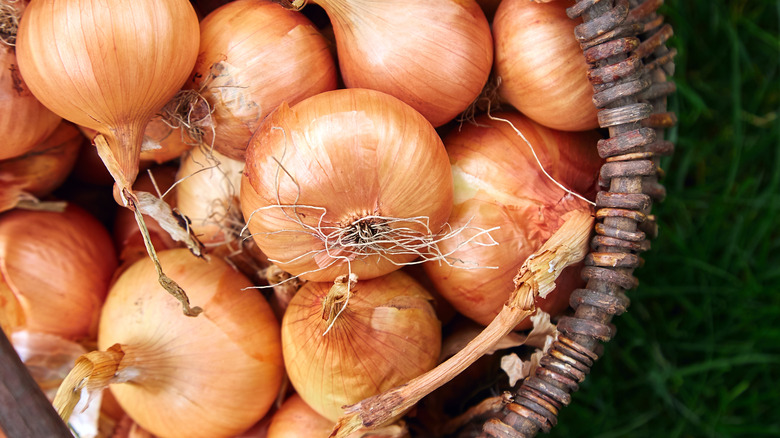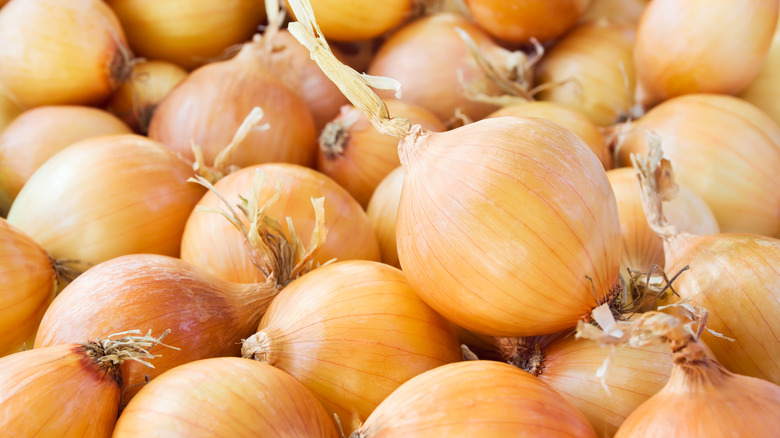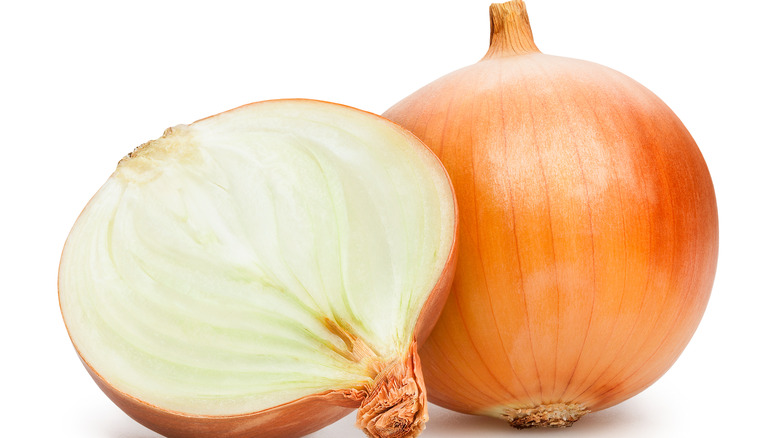The Main Difference Between Spanish And Yellow Onions
Onions are one of the most versatile and ubiquitous ingredients in cooking. Though some cultures make more use of them than others, onions are one of those things you'll still see eaten and enjoyed pretty much everywhere. But if you think one type of onion is pretty much the same as any other, you are way, way off the mark — as evidenced by the fact that vidalia onions were once one of the most highly-prized crops in Europe. This is pretty obvious when it comes to comparing red onions to white onions (one is white while the other is a bright, screaming purple), but it goes beyond that, too.
Take yellow onions and Spanish onions. They both function pretty well as all-purpose onions — and they can often be substituted for each other — but that doesn't mean they're exactly the same. Spanish onions are actually generally considered a subtype of yellow onion, meaning that while every Spanish onion is a yellow onion, not every yellow onion is a Spanish onion.
Yellow onions are extraordinarily versatile
Onions are one of the oldest vegetables in the world; it's believed they've been cultivated for around 5000 years. Food historians can't be 100% sure where they came from originally, but the prevailing theory is that they started in Central Asia and spread out from there. And boy did they spread; onions became a popular crop pretty much everywhere they went, from Asia to Europe to (eventually) North America. Yellow onions are also older than red onions too, which were first grown in places like Romania and Italy. There may not be a more versatile vegetable than the onion; it's hard to name another one that shows up seemingly everywhere.
The yellow onion can be considered one of the most basic varieties. That's not to say it's bland or uninteresting; quite the opposite. It's just that yellow onions are extraordinarily versatile, with a classic onion flavor welcome wherever onions might be used. There's nearly no recipe in which you can't substitute yellow onions and have it work.
Spanish onions didn't originally come from Spain
Though Spanish onions may be a type of yellow onion, with a generally similar flavor profile, they're often displayed separately from other yellows in grocery stores. There's a reason for that: they're easy to visually distinguish on account of their size. Though Spanish onions are associated with Spain, they didn't originate there: it's believed they were first cultivated by the Romans, who brought them to Spain after conquering the area. Owing to the fact that Spanish onions are grown in low-sulfur soil, they tend to be milder and sweeter than other varieties of yellow onion. This means they're ideally suited for any recipe where you want an onion flavor, but not too much of an onion flavor (like in an omelette or a stir-fry).
That being said, if you can't find Spanish onions for a recipe, you should feel free to substitute yellow onions. It will change the flavor profile a little, but not so much as to ruin it or make it unrecognizable.


